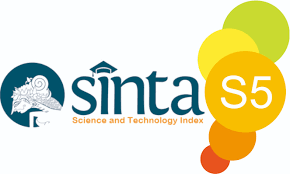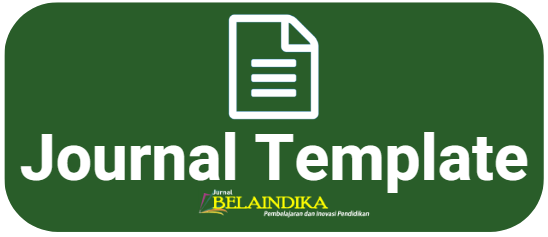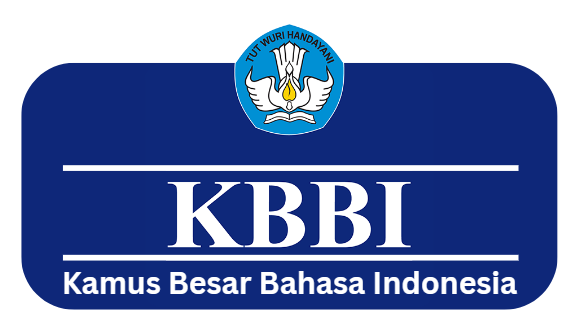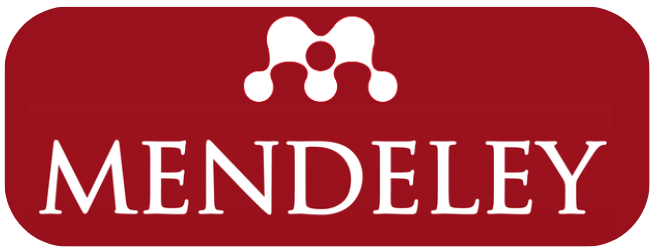Author Guidelines
Title
Title of the article, at most no more than twelve words (16pt)
Author
Writing The author must include the addition of the code and the author of the email
Example
First Author a,1,*, Second Author b,2, Third Author b,3
a First affiliation, Address, City and Postcode, Country (7pt)
b Second affiliation, Address, City and Postcode, Country (7pt)
c Third affiliation, Address, City and Postcode, Country (7pt)
1 Email First Author*; 2 Email Second Author; 3 Email Third Author (7pt)
ABSTRACT
Abstract text is written in two languages, Indonesian and English, Abstract is written according to the template provided. Abstract should not be more than two hundred words. Abstract is written in 9 pt Arial Narrow typeface. The abstract contains the introduction, research objectives, research methods, research results, and conclusions. It is also better to include the contribution of this research, and its limitations. Abstract typing is done single-spaced with narrower margins than the right and left margins of the main text. Keywords need to be included to describe the area of the problem being studied and the main terms that underlie the implementation of the research. Key words can be single words or combinations of words. The number of key words is three to five words. These keywords are required for computerization. Searching for research titles and abstracts is made easier with these key words. Avoid using conjunctions at the beginning of sentences. Use standard language in abstract writing.
- Introduction (Heading 1) (bold, 11 pt) (one single space, 11pt font)
This template is designed to assist you in preparing your manuscript; it is an exact representation of the format expected by the editor. To use this template, please just Save As to your document, then copy and paste your document here. The work should not have been published or submitted for publication else-where.
- Method (bold, 11 pt) (one single space, 11pt font)
The manuscript is written with Times New Roman, a font size 11, single-spaced, left-justified, on single pages, and A4 paper (210 mm x 297 mm). The title of the article should be brief and informative, and it should not exceed 12 words. The first letter of headings is capitalized and headings. The organization of the manuscript includes Introduction, Materials and Methods, Result, Discussion, Conclusions, and References. Acknowledgment (if any) is written after Conclusions and before References. Between paragraphs, the distance in one space.
2.1. Document Length Restrictions
The length of the submitted paper is at least 3000 words and no more than 7000 words. The editor will consider if the article requires more than 7000 words. (one single space, 11pt font)
2.2. Document Details
2.2.1. Abbreviations/Terms/Notations/Symbols
The use of the abbreviation is permitted, but the abbreviation must be written in full and complete when it is mentioned for the first time and it should be written between parentheses. Terms/Foreign words or regional words should be written in italics. Notation should be brief and clear and written according to the standardized writing style. Symbols/signs should be clear and distinguishable, such as the use of number 1 and letter 1 (also number 0 and letter O).
2.2.2. Measurements
For measurements use S.I Units (System International units). Measurement should be abbreviated (e.g. mm, kcal, etc.) in accordance the Style Manual for Biological Sciences and using the metric system. Do not begin sentences with a numerical figure. When heading a sentence, numbers should be spelled out.
2.2.3. Section Headings
Three levels of heading are allowed as follows:
- Level 1 (Heading 1 format) - 11pt, bold, left-justified
- Level 2 (Heading 2 format) - 11pt, bold, left-justified
- Level 3 (Heading 3 format) - 11pt, bold italic, left-justified
2.2.4. Body Text
The body of the text is a set of body text paragraphs defined as follows:
- 11 pt Times New Roman
- Single space, defined as 12pt
- Spacing after the heading is 3pt
- Spacing before the new heading is 3pt
2.2.5. Bullets
There are two levels of allowed bulleting:
- This is the first bullet level
This is a sub-bullet level
- Results and Discussion
3.1. Authors and Affiliations
The template is designed so that author affiliations are not repeated each time for multiple authors of the same affiliation. Please keep your affiliations as succinct as possible (for example, do not differentiate among departments of the same organization). This template was designed for two affiliations.
3.2. Identify the Headings
Headings, or heads, are organizational devices that guide the reader through your paper. There are two types: component heads and text heads. Component heads identify the different components of your paper and are not topically subordinate to each other. Examples include ACKNOWLEDGMENTS and REFERENCES, and for these, the correct style to use is “Heading 5.” Use “figure caption” for your Figure captions, and “table head” for your table title. Run-in heads, such as “Abstract,” will require you to apply a style (in this case, italic) in addition to the style provided by the drop down menu to differentiate the head from the text. Text heads organize the topics on a relational, hierarchical basis. For example, the paper title is the primary text head because all subsequent material relates and elaborates on this one topic. If there are two or more sub-topics, the next level head (uppercase Roman numerals) should be used and, conversely, if there are not at least two sub-topics, then no subheads should be introduced. Styles named “Heading 1,” “Heading 2,” “Heading 3,” and “Heading 4” are prescribed.
3.3. Figures and Tables
Positioning Figures and Tables: Place figures and tables at the top and bottom of columns. Avoid placing them in the middle of columns. Large figures and tables may span across both columns. Figure captions should be below the figures; table heads should appear above the tables. Insert figures and tables after they are cited in the text. Use the abbreviation “Fig. 1,” even at the beginning of a sentence.
- Conclusion
Provide a statement that what is expected, as stated in the "Introduction" chapter can ultimately result in "Results and Discussion" chapter, so there is compatibility. Moreover, it can also be added the prospect of the development of research results and application prospects of further studies into the next (based on result and discussion).
Acknowledgment
The preferred spelling of the word “acknowledgment” in America is without an “e” after the “g.” Avoid the stilted expression “one of us (R. B. G.) thanks ...”. Instead, try “R. B. G. thanks...”. Put sponsor acknowledgments in the unnumbered footnote on the first page.
Declarations
Author contribution. All authors contributed equally to the main contributor to this paper. All authors read and approved the final paper.
Funding statement. None of the authors have received any funding or grants from any institution or funding body for the research.
Conflict of interest. The authors declare no conflict of interest.
Additional information. No additional information is available for this paper.
References
The template will number citations consecutively within brackets [1]. The sentence punctuation follows the bracket [2]. Refer simply to the reference number, as in [3]—do not use “Ref. [3]” or “reference [3]” except at the beginning of a sentence: “Reference [3] was the first ...”
Number footnotes separately in superscripts. Place the actual footnote at the bottom of the column in which it was cited. Do not put footnotes in the reference list. Use letters for table footnotes.
Unless there are six authors or more give all authors’ names; do not use “et al.”. Papers that have not been published, even if they have been submitted for publication, should be cited as “unpublished” [4]. Papers that have been accepted for publication should be cited as “in press” [5]. Capitalize only the first word in a paper title, except for proper nouns and element symbols.
For papers published in translation journals, please give the English citation first, followed by the original foreign-language citation [6].
[1] G. Eason, B. Noble, and I.N. Sneddon, “On certain integrals of Lipschitz-Hankel type involving products of Bessel functions,” Phil. Trans. Roy. Soc. London, vol. A247, pp. 529-551, April 1955. (references)
[2] J. Clerk Maxwell, A Treatise on Electricity and Magnetism, 3rd ed., vol. 2. Oxford: Clarendon, 1892, pp.68-73.
[3] I.S. Jacobs and C.P. Bean, “Fine particles, thin films and exchange anisotropy,” in Magnetism, vol. III, G.T. Rado and H. Suhl, Eds. New York: Academic, 1963, pp. 271-350.
[4] K. Elissa, “Title of paper if known,” unpublished.
[5] R. Nicole, “Title of paper with only first word capitalized,” J. Name Stand. Abbrev., in press.
[6] Y. Yorozu, M. Hirano, K. Oka, and Y. Tagawa, “Electron spectroscopy studies on magneto-optical media and plastic substrate interface,” IEEE Transl. J. Magn. Japan, vol. 2, pp. 740-741, August 1987 [Digests 9th Annual Conf. Magnetics Japan, p. 301, 1982].
[7] M. Young, The Technical Writer’s Handbook. Mill Valley, CA: University Science, 1989.
Supplementary Material
Supplementary material that may be helpful in the review process should be prepared and provided as a separate electronic file. That file can then be transformed into PDF format and submitted along with the manuscript and graphic files to the appropriate editorial office.

_page-0001_-_Copy11.jpg)






